You are here: Foswiki>Gunwiki Web>RefReloading>ProcTumblingBrass>ProcCleaningTumbler (14 May 2008, SeanNewton)Edit Attach
Cleaning a Vibratory Tumbler
As you can see in the picture below, tumblers get dirty over time. During the process of vibratory tumbling, the media scratches spent powder and lead out of the shell casings. That lead doesn't simply vanish - some of it lodges in the media, but a good chunk of it gets deposited inside of the tumbler. I deliberately tumbled a number of loads of brass without cleaning my tumbler, in order to write this article.Getting it clean
The layer of material on the inside of my tumbler was thick enough that it could be scraped with a fingernail. I used Hoppes #9 powder solvent, a popular bore cleaner, to dissolve the accrued powder and lead. I dipped a corner of a paper towel in it, then used the paper towel to apply it to the cleaning area - then wiped it off with the dry part of the towel.Water as a Solvent
Some of you may think that water and scrubbing could substitute for powder solvent - this is not the case. After a bit of scrubbing, the ring of powder lightened up a little, and that was the extent of water's cleaning virtue in this context. I stopped scrubbing when the paper towel wore through, having only lightened up the ring - not penetrated it. The moral of this story: without a decent powder solvent, nothing short of steel wool will remove tumbling residue. In the last picture, you'll notice all of the gunk that was removed from the tumbler. It's also worth noting that the central shaft of the tumbler will pick up some gunk as well.Informal Testing of Powder Solvents
I'm purposely letting my tumbler get a big nasty dirt ring again, so that I can test multiple solvents against it. At present, I intend to test:- Water
- Hand soap
- Hoppes #9
- Break-Free CLP
- Your suggestion? Contact me with some solvents you want to see tried. If you can mail me a small sample, that's even better.
Picture Gallery
- Ring around the tumbler:
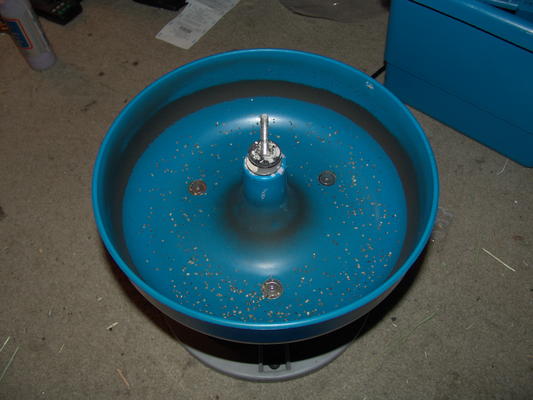
- Water does not remove powder:
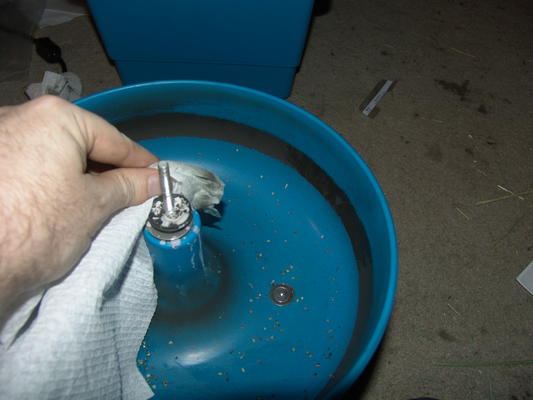
- Hoppes #9:
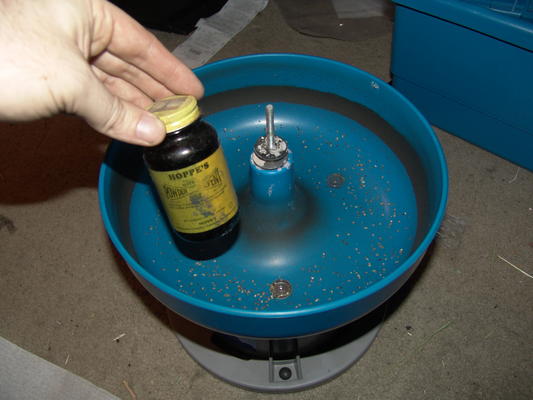
- Cleaning the ring:
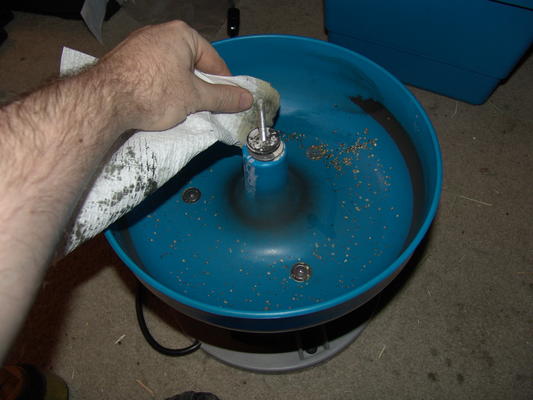
- Freshly clean tumbler:
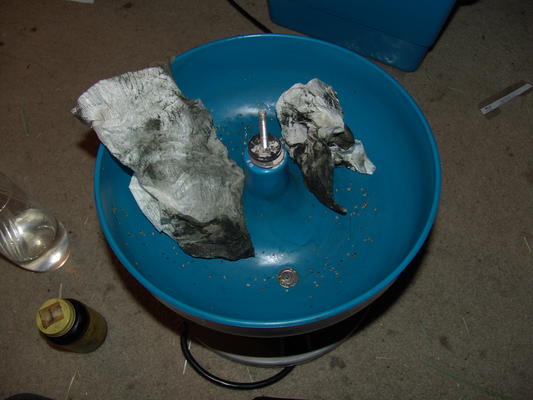
| I | Attachment | Action | Size | Date | Who | Comment |
|---|---|---|---|---|---|---|
| |
s_dsc02132.jpg | manage | 28 K | 12 Mar 2008 - 07:20 | SeanNewton | Ring around the tumbler |
| |
s_dsc02134.jpg | manage | 29 K | 12 Mar 2008 - 07:21 | SeanNewton | Hoppes #9 |
| |
s_dsc02135.jpg | manage | 28 K | 12 Mar 2008 - 07:22 | SeanNewton | Cleaning the ring |
| |
s_dsc02137.jpg | manage | 25 K | 12 Mar 2008 - 07:22 | SeanNewton | Water does not remove powder |
| |
s_dsc02141.jpg | manage | 29 K | 12 Mar 2008 - 07:23 | SeanNewton | Freshly clean tumbler |
Edit | Attach | Print version | History: r3 < r2 < r1 | Backlinks | View wiki text | Edit wiki text | More topic actions
Topic revision: r3 - 14 May 2008, SeanNewton
%META:TOPICINFO{author="ProjectContributor" date="1231502400" format="1.1" version="1"}%
 Copyright © by the contributing authors. All material on this collaboration platform is the property of the contributing authors.
Copyright © by the contributing authors. All material on this collaboration platform is the property of the contributing authors. Ideas, requests, problems regarding Foswiki? Send feedback


